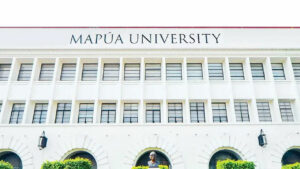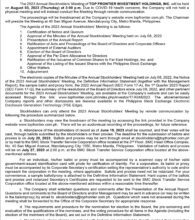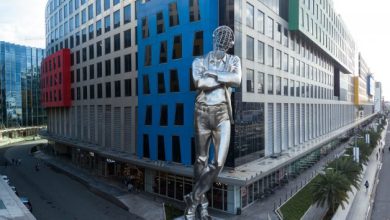Around the world in 3 years

IN 1519, five ships were sent on an expedition in search of the Spice Islands. In service to the King of Spain, Portuguese navigator Ferdinand Magellan commanded the Trinidad, the lead ship, and four other vessels: the San Antonio, Conception, Santiago, and Victoria on a trade and exploration mission. After Magellan was killed in the Battle of Mactan, Castilian navigator Juan Sebastián Elcano took command of the expedition. In 1521, the last surviving ship, the Victoria, returned to Spain with just 18 sailors out of the original 270. This expedition is known in history as the first circumnavigation of the globe.
In line with the quincentennial commemoration of the voyage, the National Museum of the Philippines, in collaboration with the Embassy of Spain in Manila, presents the traveling exhibition, “First Journey Around the World” at Galleries 25 and 26 at the National Museum of Fine Arts. The exhibit highlights details of the Magellan-Elcano expedition with documents, artifacts, and objects.
Launched in 2019, the original and unabridged exhibition was on view at the Archivo General de Indias in Seville, Spain. The Archivo General is a treasure trove of documents on the ages of discovery, conquest, and colonial administration across the whole of the Spanish Empire, including the Philippines.
“In the context of the world, the expedition revolutionized the knowledge, education, and trade of the world,” Luis Morales Fernandez, the First Secretary of the Embassy of Spain, said at the exhibit’s press launch on March 21.
TRAVELING EXHIBITOver the last two years, a traveling version of “The Longest Journey” has been featured in museums around the world. The abridged version on view at the National Museum of the Philippines is composed of 14 sections, and includes facsimiles of archival documents like the contract between Carlos I and Ferdinand Magellan, and works by the expedition’s chronicler Antonio Pigafetta.
“Once you get past the introductory and preparation part, the Philippines is just one part in the original exhibit curated in Spain,” Director-General National Museum of the Philippines Jeremy Barns told members of the press.
“For our edition here, we added an additional gallery [to] break out of the original exhibit and there is a fuller treatment of that Philippine stage,” Mr. Barns said, adding that it was done to “make the exhibition unique and resonate with everyone.”
Jorge Moragas Sanchez, Spain’s Ambassador to the Philippines, was a special guest curator.
“The ambassador himself was really hands on with the project because he’s been invited to attend all these [quincentennial] commemorations around the country,” Mr. Barns said. “So, he was really inspired to really contribute his personal point of view as the representative of Spain in the Philippines to the exhibit. He took the time to get to know our objects; and [he] even helped us select [items] for the exhibit.”
MAPS, MODELS, PORTRAITSAt the entrance of the exhibit is an infographic map that provides a geographic illustration of the three-year voyage.
The centerpiece at the main gallery is a model of the Victoria, the only ship out of the inaugural five to return to Spain. Four screens also display audio-visual presentations from the original exhibition.
The National Museum and the Spanish Embassy worked with the exhibit’s Spanish curatorial team to include special archaeological, ethnographic, and devotional art objects and natural history specimens of flora and fauna. The objects were chosen from the collections of the National Museum and the Intramuros Administration to evoke what Magellan and his crew might have seen upon their arrival to the Philippine archipelago.
Also on view is a pair of mid-19th century portraits in oil of Ferdinand Magellan and Sebastian Elcano that were commissioned in 1856 from Manila by Margarita Roxas de Ayala and painted by an unknown artist in Madrid. The paintings were donated to the National Library of the Philippines in 1914. They are on loan courtesy of the Office of the President through the Malacañang Museum.
“The real significance is the pushing the new knowledge scientific, geographical, and the whole sense of human achievement. This exhibit does focus on these Philippine highlights, but it really offers the visitor a lot of what you need to know to appreciate this whole milestone of humanity,” Mr. Barns said.
Mr. Barns said that the exhibition is expected to be on view for a year.
“The Longest Journey” was originally curated by a team headed by Antonio Fernández Torres, and organized by Acción Cultural Española and Spain’s Ministry of Culture and Sports. A comprehensive exhibition catalogue written in Spanish with scholarly essays and references is accessible and downloadable for free at https://www.accioncultural.es/es/el-viaje-mas-largo-ebook.
NATIONAL MUSEUM’S PLANSWith the relaxing of COVID-19 restrictions, Mr. Barns said that the National Museum is currently designing future onsite activities for the students and the public. It is also focusing on mounting exhibitions in the regional museums.
“What we’re focusing on is refreshing our permanent exhibits and the permanent exhibits in our newer branches. Because of the pandemic, we were not able to fill out all the galleries in our museums in either Iloilo and in Bicol and so on. We’re going to be rolling those out in the next, like for the rest of this semester,” Mr. Barns said.
Future exhibits in the pipeline at the main museums in Manila this year include one on Spanish-Filipino architecture, and Filipino aboriginal communities.
For more information, visitwww.facebook.com/nationalmuseumofthephilippines — Michelle Anne P. Soliman



![Photo of [B-SIDE PODCAST] Trolls, TikTok, and the 2022 elections](https://redstateinvestings.com/wp-content/uploads/2020/01/Screenshot-2019-03-20-at-09.24.29.png)
